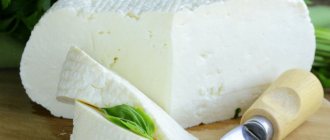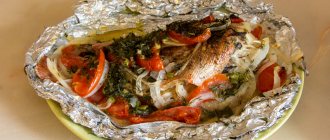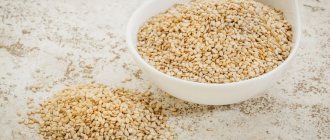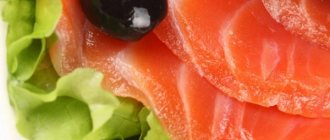Properties of smoked cheese
Nutritional value and composition | Vitamins | Minerals
How much does smoked cheese cost (average price per 1 kg)?
Moscow and Moscow region.
220 rub.
Any cheese that has gone through a special smoking stage is called smoked cheese. Typically, this product is distinguished by a yellowish-brown rind, which is the result of vulcanization processes on the surface of the cheese at high temperatures. It is noteworthy that the tradition of making smoked cheese originated in Denmark, so the country rightfully counts it among its greatest inventions.
Basically, smoked cheese is made in one of two ways: cold and hot smoking. The cold smoking method, depending on the type of cheese, can take from a week to a month. Moreover, the cheese is smoked in the temperature range from 21 to 32 °C. Interestingly, this method does not require constant monitoring, so in some enterprises cold smoked cheese is produced without direct human intervention.
Regarding the hot smoking method, we can say that it is more complex, and therefore the process is partially or completely under human control. This smoked cheese is heat treated at a temperature of 38-88° C for a shorter period of time.
In addition, there is another way to obtain so-called smoked cheese, which is used by some unscrupulous manufacturers. They use less expensive varieties of cheese and “bathe” it in liquid smoke, flavorings and food coloring, aiming to achieve a similar color and flavor to the original smoked cheese. It is clear that such a product is of low quality and can hardly be called smoked cheese.
As for varieties of high-quality smoked cheese, there are many known. They are made from certain types of famous expensive cheeses: Gouda, Gruyère, Cheddar and Mozzarella. There is also smoked processed cheese, which in our country is usually called sausage cheese. The calorie content of smoked cheese is approximately 380 kcal per hundred grams of the finished product.
Calorie content Smoked cheese. Chemical composition and nutritional value.
Nutritional value and chemical composition of “Smoked cheese”.
The table shows the nutritional content (calories, proteins, fats, carbohydrates, vitamins and minerals) per 100 grams of edible portion.
| Nutrient | Quantity | Norm** | % of the norm in 100 g | % of the norm in 100 kcal | 100% normal |
| Calorie content | 274.8 kcal | 1684 kcal | 16.3% | 5.9% | 613 g |
| Squirrels | 23 g | 76 g | 30.3% | 11% | 330 g |
| Fats | 19.2 g | 56 g | 34.3% | 12.5% | 292 g |
| Organic acids | 1.9 g | ~ | |||
| Water | 41.5 g | 2273 g | 1.8% | 0.7% | 5477 g |
| Ash | 4.5 g | ~ | |||
| Vitamins | |||||
| Vitamin A, RE | 258 mcg | 900 mcg | 28.7% | 10.4% | 349 g |
| Retinol | 0.23 mg | ~ | |||
| beta carotene | 0.17 mg | 5 mg | 3.4% | 1.2% | 2941 g |
| Vitamin B1, thiamine | 0.03 mg | 1.5 mg | 2% | 0.7% | 5000 g |
| Vitamin B2, riboflavin | 0.36 mg | 1.8 mg | 20% | 7.3% | 500 g |
| Vitamin B6, pyridoxine | 0.13 mg | 2 mg | 6.5% | 2.4% | 1538 g |
| Vitamin B9, folates | 19 mcg | 400 mcg | 4.8% | 1.7% | 2105 g |
| Vitamin B12, cobalamin | 1.4 mcg | 3 mcg | 46.7% | 17% | 214 g |
| Vitamin C, ascorbic acid | 0.7 mg | 90 mg | 0.8% | 0.3% | 12857 g |
| Vitamin D, calciferol | 0.84 mcg | 10 mcg | 8.4% | 3.1% | 1190 g |
| Vitamin E, alpha tocopherol, TE | 0.5 mg | 15 mg | 3.3% | 1.2% | 3000 g |
| Vitamin RR, NE | 6.6 mg | 20 mg | 33% | 12% | 303 g |
| Niacin | 0.2 mg | ~ | |||
| Macronutrients | |||||
| Potassium, K | 80 mg | 2500 mg | 3.2% | 1.2% | 3125 g |
| Calcium, Ca | 900 mg | 1000 mg | 90% | 32.8% | 111 g |
| Magnesium, Mg | 50 mg | 400 mg | 12.5% | 4.5% | 800 g |
| Sodium, Na | 850 mg | 1300 mg | 65.4% | 23.8% | 153 g |
| Sera, S | 256 mg | 1000 mg | 25.6% | 9.3% | 391 g |
| Phosphorus, P | 590 mg | 800 mg | 73.8% | 26.9% | 136 g |
| Microelements | |||||
| Iron, Fe | 0.9 mg | 18 mg | 5% | 1.8% | 2000 g |
| Manganese, Mn | 0.1 mg | 2 mg | 5% | 1.8% | 2000 g |
| Copper, Cu | 90 mcg | 1000 mcg | 9% | 3.3% | 1111 g |
| Zinc, Zn | 4.5 mg | 12 mg | 37.5% | 13.6% | 267 g |
| Essential amino acids | 10.47 g | ~ | |||
| Arginine* | 0.95 g | ~ | |||
| Valin | 1.57 g | ~ | |||
| Histidine* | 0.765 g | ~ | |||
| Isoleucine | 1.1 g | ~ | |||
| Leucine | 2.37 g | ~ | |||
| Lysine | 1.81 g | ~ | |||
| Methionine | 0.52 g | ~ | |||
| Methionine + Cysteine | 0.82 g | ~ | |||
| Threonine | 1.01 g | ~ | |||
| Tryptophan | 0.7 g | ~ | |||
| Phenylalanine | 1.39 g | ~ | |||
| Phenylalanine+Tyrosine | 2.95 g | ~ | |||
| Nonessential amino acids | 14.745 g | ~ | |||
| Alanin | 0.7 g | ~ | |||
| Aspartic acid | 1.76 g | ~ | |||
| Glycine | 0.45 g | ~ | |||
| Glutamic acid | 4.21 g | ~ | |||
| Proline | 2.82 g | ~ | |||
| Serin | 1.23 g | ~ | |||
| Tyrosine | 1.56 g | ~ | |||
| Cysteine | 0.3 g | ~ | |||
| Sterols (sterols) | |||||
| Cholesterol | 89 mg | max 300 mg | |||
| Saturated fatty acids | |||||
| Saturated fatty acids | 12.2 g | max 18.7 g | |||
| 6:0 Kapronovaya | 0.1 g | ~ | |||
| 8:0 Caprylic | 0.19 g | ~ | |||
| 10:0 Kaprinovaya | 0.58 g | ~ | |||
| 12:0 Lauric | 0.77 g | ~ | |||
| 14:0 Miristinovaya | 2.7 g | ~ | |||
| 15:0 Pentadecane | 0.39 g | ~ | |||
| 16:0 Palmitinaya | 5.39 g | ~ | |||
| 17:0 Margarine | 0.19 g | ~ | |||
| 18:0 Stearic | 2.02 g | ~ | |||
| Monounsaturated fatty acids | 6.84 g | min 16.8 g | 40.7% | 14.8% | |
| 14:1 Myristoleic | 0.39 g | ~ | |||
| 16:1 Palmitoleic | 0.58 g | ~ | |||
| 18:1 Oleic (omega-9) | 5.87 g | ~ | |||
| Polyunsaturated fatty acids | 0.96 g | from 11.2 to 20.6 g | 8.6% | 3.1% | |
| 18:2 Linolevaya | 0.96 g | ~ | |||
| Omega-6 fatty acids | 1 g | from 4.7 to 16.8 g | 21.3% | 7.8% |
The energy value of smoked cheese is 274.8 kcal.
Primary Source: Created in the application by the user. Read more.
** This table shows the average levels of vitamins and minerals for an adult. If you want to know the norms taking into account your gender, age and other factors, then use the “My Healthy Diet” application.
The benefits of smoked cheese
The benefits of smoked cheese can only come from a high-quality product, which contains exclusively the components required by the production technology. This dairy product is rich in calcium and phosphorus, which we need for healthy bones, nails and hair.
In addition, the fats in smoked cheese have increased nutritional value. Thanks to this, the calorie content of smoked cheese is also quite high, and these same fats act as sources of fatty acids for the human body, as well as vitamins A, E and D. The benefits of smoked cheese lie in the considerable content of high-quality protein, which, in turn, has contains a set of amino acids necessary for human health.
Sandwiches with sausage cheese
Don't know what to cook for breakfast? We offer you an excellent option - crispy sandwiches with sausage cheese. They can be eaten as a separate dish or served with vegetable or chicken soup.
Ingredients:
- 200-300 g sausage cheese;
- a loaf of white bread or baguette;
- a little butter.
Preparation:
1. It is best to buy white bread for toast. We cut each piece into 4 parts.
2. Open the package of butter. The product must comply with GOST standards (this is indicated on the wrapper). Place a piece of butter on each toast.
3. Cut the sausage cheese into slices. And then in halves. Cover the bread and butter with them.
4. Preheat the oven to 180 degrees. Place a baking sheet with sandwiches into it. We time it for 10 minutes. After the specified amount of time, take out the baking sheet. The bread was soaked in butter and the cheese was slightly browned. Sandwiches are served both hot and cold.
If you have a lot of sausage cheese and you don’t know where to put it, then you can prepare a salad with the addition of this product. Everything is very simple. Grate hard-boiled eggs and cheese on a coarse grater. Grind the garlic using a special press. Mix these ingredients in one cup. Season with mayonnaise. It turns out very tasty.
Positive and negative sides
Like any other food product, smoked cheese has its pros and cons. To begin with, it is necessary to note that, no matter what method is used for preparation, it still remains a dairy product. That is why its benefits are undeniable and are determined by the content:
- Phosphorus and calcium, which make nails, bones and hair stronger.
- A large amount of fat, which is a source of fatty acids that are very necessary for the human body.
- Rich in vitamin complex (A, D and E). For women, vitamin D is especially important, as it has a rejuvenating effect on the body.
- High-quality proteins that contain many different amino acids necessary for health.
But eating such food is not entirely safe for the human body. The harmful effects are due to:
- The presence of type E additives in some smoked products, which can lead to allergic reactions.
- Oversaturation of the body with salt and retention of a significant amount of fluid.
- The use of liquid smoke in the technological process, which is extremely undesirable for both children and adults.
How is the melted product produced?
Smoked cheese is made by melting it at a temperature of 95°C and is subsequently formed into a sausage, which is why the product got its name. The original appearance of smoked cheese is obtained due to the packaging of the finished mass in polymer or cellophane packaging. To give it a unique aroma, processed cheese is smoked. To do this, it is processed in special smokehouses for approximately 3 hours.
The result of this production process is sausage processed smoked cheese, if the technology was carefully and conscientiously followed by the manufacturer.
The average calorie content of the finished product will be approximately 275 kilocalories for every 100 grams of cheese.
However, this indicator may vary among different manufacturers depending on the ingredients and smoking method. Some types of smoked products are treated with a food additive known as “liquid smoke”. It contains synthetic components that are much less beneficial for the body than traditional smoking.
Composition of nutrients, BJU
Sausage cheese
| For quantity: 100 grams | ||
| Calories — 346 | Calories from fat - 276 | |
| BJU | ||
| Total fat content | 30.65g | |
| Saturated | 10.37g | |
| Polyunsaturated | 2.85g | |
| Monounsaturated | 13.08 | |
| Cholesterol | 73mg | |
| Total carbohydrate content | 1.88g | |
| Dietary fiber | 0.07g | |
| Sugar | 0.18g | |
| Squirrels | 15.27g | |
| Vitamins and microelements | ||
| A - 112.5 µg | C - 0mg | |
| B-6 – 0.13 mg | B-12 – 1.73µg | |
| D - 0.3 µg | E - 0mg | |
| Calcium 68mkg | Iron 1.41 mg | |
| Magnesium 15.67 mg | Zinc 2.18mg | |
| Potassium 188 mg | Sodium 1122 mg | |
Distribution of calories for BJU:Carbohydrates (4%) Fats (79%) Proteins (17%) | ||
How to choose and consume correctly
The main usefulness of such melted products is its compounds of natural origin. On the other hand, sausage cheese produced at high temperatures is inferior to other types of cheese products in terms of its beneficial substances. Even so, it contains large amounts of phosphorus, potassium, calcium, folic acid and vitamin A.
The energy value of 100 grams of finished cheese can be represented as the following structure:
- fat 19.4 g (almost 175 kcal);
- proteins 21.2 g (about 85 kcal);
- carbohydrates 3.7 grams (15 kcal).
It is worth noting that this product helps us in creating healthy nails, hair and bones. It contains a significant amount of useful high-quality proteins, which are a supplier of amino acids.
The main limiting factor in consuming this product is its high cholesterol content. Also, many food additives are involved in its production process.
For these reasons, nutrition experts do not recommend including smoked processed cheese in the daily diet, especially for people with heart problems or who are prone to obesity. It will be enough to be content with a weekly norm of 100-200 grams.
When choosing this product, pay attention to its external signs in order to protect yourself from low-quality products. Well-prepared smoked cheese has a specific smoked smell and taste.
It should have a medium-hard golden crust under plastic wrap. It is consumed as an independent dish, as a snack or used for sandwiches. Housewives add processed cheese to various salads and pizzas.









